Text

Willow Skye-Biggs
"Dreams In Suspension"
Cassette / Digital
II092 (2024)
Bandcamp (pre-order)
0 notes
Text
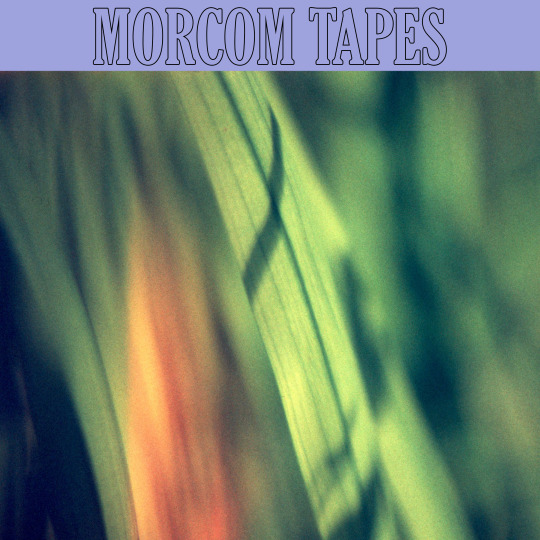
Channelers
"Morcom Tapes"
Digital
II091 (2024)
Bandcamp / Stream
0 notes
Text

Interview with Sawyer G. (December 2023)
Back in September we shared Sawyer Gebauer's first release as Sawyer G., It'll Be Gone For A Little While, which is also his first foray into instrumental music. Here we get to dive deeper into his evolving practice.
1. What are some recent inspirations?
Lately, there's been a lot of experimental, ambient, techno, house, breakbeat, and glitch. The Berlin-based projects Nthng and S.W. stand out for their grasp of techno/house historical roots while weaving their uniqueness into the fabric of the genre. Nosaj Thing's album Continua (2022) has been my companion for the past month.
In literature, I recently completed the knighted historian Keith Thomas's work, Religion and the Decline of Magic (1971). This 800-page tome explores 16th/17th century England, offering a detailed account of the ebb and flow, as well as the reciprocal relationship between Christianity and the occult, much of which happened during the Interregnum period. My next instrumental album will play off of these themes, each song titled inspired by superstitious methods used during these periods to keep evil spirits away.
Visually, Paleochristian and Middle Age art and architecture have been fun to dive into further this year. The implementation of abstract form in exchange for naturalistic representation to pursue the divine is fascinating. Not to mention the symbolism in the storytelling that creates a mysterious aura. I’ve noticed there's been increased references to, and acceptance of, this period of art in contemporary culture. I wonder if it has anything to do with our own self-abstraction in search of a new space, a virtual space. A quest for transcendence to reach a higher plane through technology and our drive to escape the earthly realm for a brighter, more powerful, and convenient world.
2. As someone who has worked so much in the realm of song-based music (lyrics, melodies, etc.), do you feel that instrumental music allows you to express things that you can’t in the song format?
Yes. It was freeing to break from word and structure. I made my most impactful and genuine work because of this freedom. My whole creative life led up to those moments making this album, and I found a piece of myself that was present, yet dormant. Now, I feel the experimental and the song-based format have been merging in really exciting and interesting ways.
3. Do you prefer to refine a composition over a period of time or capture something quickly and move on?
It’s circumstantial. If there's flow between me and the song, and the space is right, I can work on a song for two weeks straight, 40 hours a week. However, if I step away from it too long, I find it difficult to return to the same creative realm that space once provided. At that point, I chalk it up as another step closer to the song that needs to be created later. Not everything I put time into needs to be a released product, or even a finished one. To be discerning and letting things go can make the future work better.
4. How do you like to get perspective on your work?
I have those whom I trust that will give constructive words to make the work better. I’ve been releasing music since I was 18, almost 15 years. Something I’ve realized is that as you get older and more invested in your passion, the need for praise to build confidence is no longer sought after. Instead, you want to know how the work can get better, and how much deeper you can go. Trusted external sources can help get you where you want to be, rather than getting lost in the false direction of expectation. If you're doing it right, you are making it for yourself and the ones around you.
5. When did you first start releasing music? And how has your relationship to the releasing process changed since then?
I was in high school when I released my first album O Lost!, inspired by Thomas Wolfe’s novel Look Homeward, Angel. When I graduated, I moved to Stockholm and signed to a now dissolved label run by an ex-pat from Canada. This was 2010, before Spotify was the gate keeper of music consumption that resulted in listeners becoming further passive in how they discover music, relying on playlist automation. Indie fans still found their music through blogs and Soundcloud. That’s not so much the case anymore. Through the convenience of technology that brings with it affordability, a lot of our art consumption is severed from connection or relationship. Like fast fashion, fast design, fast food, there is fast art. Easy come, easy go. Little is left with a lasting impact or impression. That seems to me like one of the biggest changes releasing music in the past 10 years or so.
6. How much of a role does improvisation play in the tracks that make up It’ll Be Gone For A Little While?
There's a good balance between composition and improvisation in It’ll Be Gone for A Little While. I try not to force things. I rarely have an idea of what I want to do with a song when beginning. Instead, I listen and feel where the song wants to go. This flow has worked well for me. I find that if I have too much of an intention or idea of what I want to do, there is friction, and it comes out feeling stiff and soulless. I've found that those initially intended ideas come out naturally when they need to.
7. Are there any particular pieces of visual art that inspired the tracks on the album?
Love that question. At the time, Lee Ufan, Pat Steir, Barnett Newman, Isamu Noguchi, Joan Miro. You can hear this in the album - Moments of minimalism and maximalism. At times it can be disturbing, peaceful, or contradictory, like tranquil chaos.
8. You’ve mentioned fragmentation being an important aspect of this new work. How does it factor in for you?
To come full circle from the second question. I was in the realm of creating in structured form most of my life. It's important to have a firm grasp on structure and tradition to break it down in interesting, provocative, and productive ways while acknowledging the importance of the past. Studying jazz, which then took me into realms of experimentalism and ambient, was imperative toward intentionally breaking down these forms.
9. Do you feel like working on this instrumental project has influenced your approach to Catch Prichard and your song-oriented music?
Absolutely. I have incorporated elements from both fields. Sampling, granular synthesis, ambient and experimental sonic space. It has come to a degree that, when beginning a piece, I don’t know whether it will be a Catch Prichard track or a Sawyer G. song. The expression to be able to weave in and out, but also fuse together these themes, has been incredibly enlightening. I'm excited to see where it goes.
10. Words of wisdom you like to recall in times of need?
Creatively, do you. Trust your intuition. Let your work guide you where it needs to go, it only needs your help to bring it to its full potential.
2 notes
·
View notes
Text
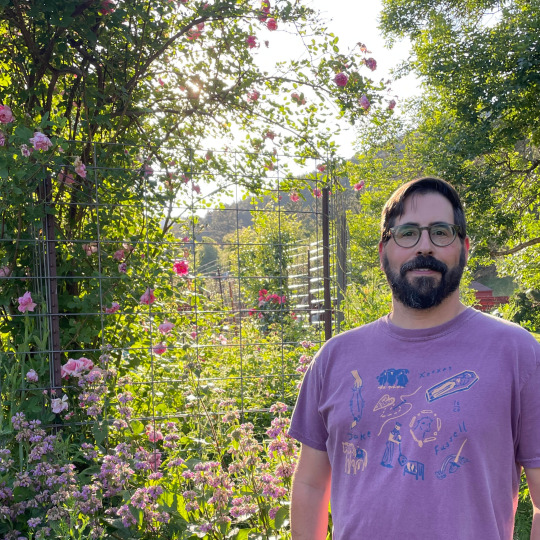
Interview with Golden Brown (December 2023)
Golden Brown is the work of Stefan Beck. This year, on Inner Islands, he released Weird Choices back in February and Wide Ranging Rider in September. Here we get to hear more about his creative practice and other musical endeavors from this year.
1. What are some recent inspirations?
I was lucky enough recently to see Bela Fleck, Edgar Meyer, Zakir Hussain, and Rakesh Chaurasia play live. It was an absolutely mind blowing performance that I'll carry with me for a long time. Their album As We Speak has been a favorite of mine this year and it was such a treat to see this music live. Four brilliant musicians playing acoustic instruments, they create this amazing sound that is somehow greater than the sum of its parts, even though they are all absolute masters of their instruments. Zakir Hussain is a mad genius of rhythm and the most melody forward percussionist I have ever seen live.
2. You have been playing live a fair bit this year. How has it been translating your pieces into the live realm? Do you take a different approach from the studio versions?
It's been fun trying different approaches with live versions of songs. They do usually take on a different character than the recorded versions. With some of the Wide Ranging Rider songs, this has involved changing from acoustic to electric guitar and incorporating some effects. A few times I've experimented with weaving a few songs into a flowing suite if they are all in the same key/tuning. I try to do things a little differently each time, improvising and changing arrangements. One of my favorite gigs this year was opening for the River Arkansas at the Fox Theater in Boulder. I was lucky enough to have my friends Macon and Robin from the River Arkansas play bass and drums with me on a few songs. They are super talented, intuitive musicians and brought such a fun and different vibe to the music.
3. How composed vs. improvised are the pieces on Wide Ranging Rider? There are obviously strong melodic motifs in every piece, but are there also sections that are more freeform?
Wide Ranging Rider is the first Golden Brown album to be fully written throughout prior to recording. I usually rely on some of the serendipity of layering improvisations when making music, so this felt really different. Improvisation played into some of the arrangements with the additional textural elements of electric guitar and keyboards on songs like Ambergris and Dusty, but the fingerpicked acoustic guitar for each piece was fully realized prior to recording.
4. How do you write a piece like Wide Ranging Ride I or II? Is it following a feeling or trying to capture an image? How does it go for you?
I didn't have a specific image or feeling in mind when writing, but there is a certain energy that flows throughout. It's kind of tough for me to put into words, but there definitely is shared DNA between those two pieces as well as Little Rider and Withywindle. Similarly, Cobwebs and Sage and Scurvy have some melodic elements and vibe in common.
Wide Ranging Rider I has been something I have been playing for about 20 years, but didn't feel complete until WRR II came about. I was writing a lot in open G tuning (DGDGBD), and at some point realized that several of the themes I was working on were connected. Originally, WRR I & II were arranged into a single long suite, with WRR II sandwiched in the middle of WRR I. Eventually, I decided I preferred them split into separate pieces to open each side of the LP. But I may try and play the full suite live at some point.
Wide Ranging Rider I and II as well as Kirghiz Light are linear compositions. The form is something closer to ABCDEFGA rather than a more typical progression of like ABABCB or ABA.
5. Do you feel like your work with the guys in Prairiewolf has influenced your solo work at all?
I do! It's been really wonderful making music collaboratively in addition to my solo pursuits. And I am lucky to have Tyler and Jeremy as bandmates who I can bounce ideas off of. The most apparent influence is on some music I'm working on for release in 2024 hopefully - it's kind of my version of a Bill Laswell style ambient dub album. I used a drum machine for a few of the songs, a first for me as Golden Brown. I had a lot of fun running the drum machine through my effects and kind of live dubbing the rhythm track as I recorded it. And Jeremy was kind of enough to play some synth and keyboards on one of the songs. It's pretty different in sound from most of what I've done before, though High Tide at Gold Beach (2012) is probably closest. The end result I think will be the most Prairiewolfish I've made music under the name Golden Brown.
6. How did the Prairiewolf group come together? The three of you fit together in such a nice and seamless way.
It was serendipitous for sure. We had all sort of met online and gathered to try it out in early 2022. It wasn't perfect from the get go but there was definitely some synergy there. It's been really fun to watch it develop. Jeremy and Tyler both are really good listeners as well as excellent musicians, and we share a lot of common musical ground. I try not to take it for granted that it works as well as it does. We are working on our second album together and it's pretty exciting. We have a good batch of songs, more than we can fit on one album, and it seems like we are continually coming up with more. We've also leaned into playing live this year and have gotten into some good zones as a result.
7. Who might a dream collaborator be with someone from an older generation?
Bill Frisell for sure. I can't think of anyone who's had a bigger impact on my music. My dream would be to have a musical voice as emotive, singular, and recognizable as Bill Frisell. My dad first played Good Dog, Happy Man for me over twenty years ago and that music has become integral to me as a musician. I love almost everything Frisell has done but that album, Ghost Town, Nashville, and the Intercontinentals are very special.
8. Do you have any rituals to get you in the zone to work on music?
Not really, often it's just a matter of playing and trying different things until the conscious part of the mind turns off and I am relying more on my instincts. Sometimes that can happen quickly, sometimes it can take a long time. And sometimes in the moment, I have no idea whether what I'm working on is good or not and just need to set it aside for a listen with fresh ears later on. But the one thing that does really help is having my little music room downstairs - to be able to play whenever I feel like it without having to set up/take down makes a big difference in terms of getting in the flow.
9. You had mentioned that The Actual Star was an influence on your Weird Choices album. Were there any literary inspirations on Wide Ranging Rider?
The Lord of the Rings trilogy was definitely an influence. Withywindle is named for the river valley in the old forest where the hobbits encounter Tom Bombadil. I felt like the melody/picking pattern kind of reminded me of Tom Bombadil bopping along through the forest. Jeff Vandermeer was also an influence, more on Ambergris than anything else (maybe with the juxtaposition of the natural/organic element of the acoustic guitar with the modified, delayed sounds of electric guitar and keyboard.) But I was also reading his Southern Reach Trilogy when a lot of the music on Wide Ranging Rider was being written and arranged, so there is probably more influence there under the surface as well.
10. Words of wisdom you like to recall in times of need?
Robert Hunter's and John Perry Barlow's lyrics from the Grateful Dead songbook have deeply soaked into the core of my being. I have a list of affirmations from Dead lyrics that is an endless wellspring of solace and inspiration. Apologies in advance, this is extra nerdy.
Every time that wheel turn round, bound to cover just a little more ground
Nothing left to do but smile, smile, smile
I love you more than words can tell
Love is real, not fade away
We can discover the wonders of nature
Inspiration, move me brightly
Light the song with sense and color, hold away despair
Without love in a dream it’ll never come true
If you get confused just listen to the music play
Shall we go, you and I while we can?
The future’s here, we are it, we are on our own
Wake up to find out that you are the eyes of the world
Wake up to find out that you are the song that the morning brings
Sometimes we live no particular way but our own
Sometimes the songs that we hear are just songs of our own
I will find my own way home
I’m a stone jack baller and my heart is true
More than just ashes when your dreams come true
Once in a while you can get shown the light in the strangest of places if you look at it right
One way or another, this darkness got to give
Let there be songs to fill the air
A box of rain will ease the pain and love will see you through
I’ll get up and fly away
Don’t give it up; you’ve got an empty cup only love can fill
2 notes
·
View notes
Text
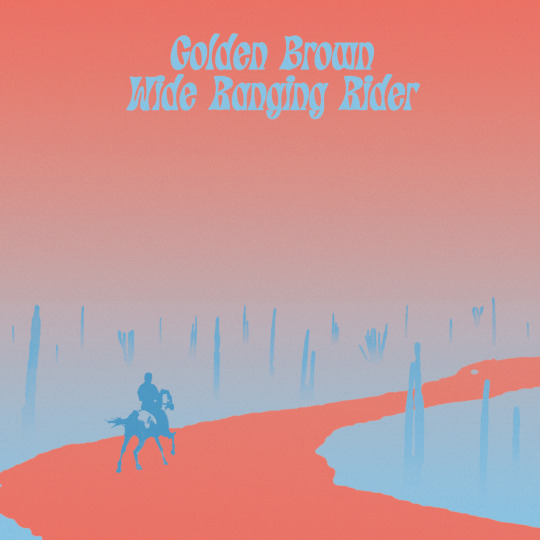
Golden Brown
"Wide Ranging Rider"
12" LP / Digital
II088 (2023)
Bandcamp / Stream
0 notes
Text

Sawyer G.
"It'll Be Gone For A Little While"
Cassette / Digital
II089 (2023)
Bandcamp / Stream
0 notes
Text
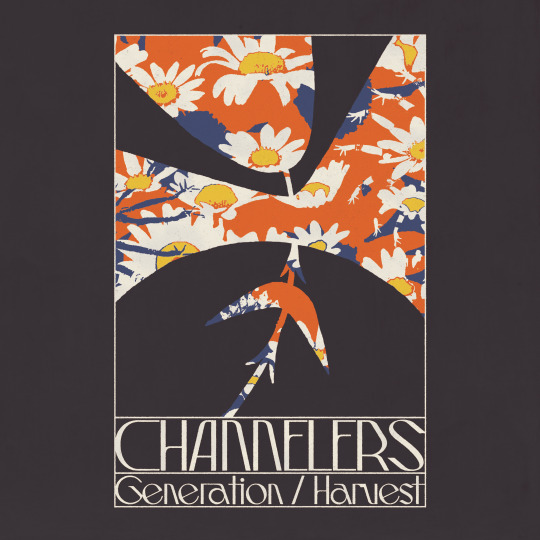
Channelers
"Generation / Harvest"
Cassette / Digital
II090 (2023)
Bandcamp / Stream
0 notes
Text
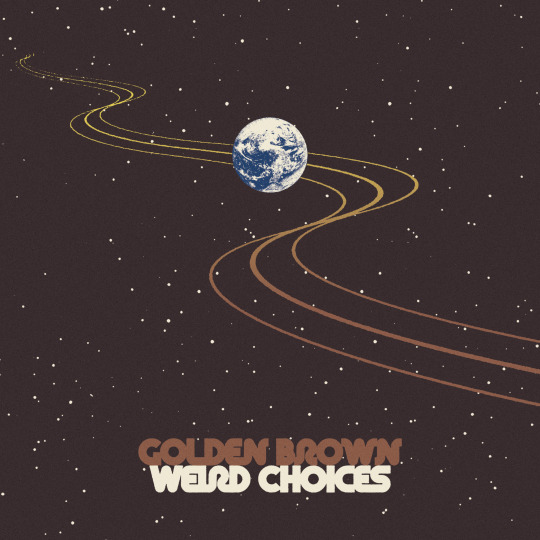
Golden Brown
"Weird Choices"
Cassette / Digital
II087 (2023)
Bandcamp / Stream
0 notes
Text

Nimbudala
"Peace Rock"
Cassette / Digital
II086 (2022)
Bandcamp / Stream
0 notes
Text
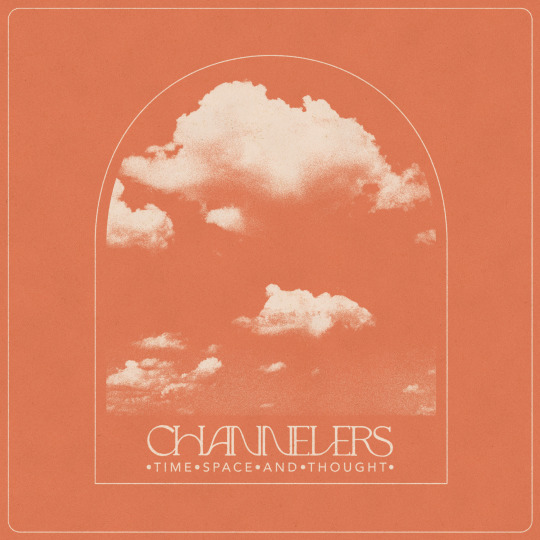
Channelers
"Time, Space, and Thought"
Cassette / Digital
II085 (2022)
Bandcamp / Stream
0 notes
Text

Rosa Beach Mason & Sean Conrad
"Wake"
Cassette / Digital
II084 (2022)
Bandcamp / Stream
0 notes
Text

Golden Brown
"Luminous"
Cassette / Digital
II083 (2022)
Bandcamp / Stream
0 notes
Text

Interview with Channelers (December 2021)
Steve Targo, of Nimbudala, interviewed Sean Conrad about his latest Channelers albums on Inner Islands. The interview was conducted in a Q&A format over email.
1. What made you decide to pick up the guitar again? Was it the desire to learn finger picking?
It was really a matter of working with my limitations at the time. At the time I had a rehearsal space that I could get loud in (where I recorded a lot of Isles Beyond), but it was shut down because of the lockdown. And my apartment is a very small one bedroom that I share with my partner, Rosa, so it’s usually a bit of a hassle to set up my gear and then tear it down every time I want to play. So acoustic guitar is pretty much the only instrument that’s compact enough to leave out, that I can casually just pick up and play for a little bit. I was inspired to try fingerpicking with my whole right hand (as opposed to the two-finger method I used to employ) while reading the book Dazzling Stranger, about Bert Jansch and the ‘60s folk revival. More fingers means more possibilities!
2. How come you stopped playing for a while? It seems that guitar was prominent in your early music as Ashan & gkfoes vjgoaf.
I kind of phased out of playing as much guitar around 2013 when I got my dulcimer. That really satisfied a lot of my acoustic desires and was a new sound to play with. I also got much more into making electronic music. At this point I’m less interested in electronic pursuits and just want to play tactile instruments.
3. Despite the gentle, soothing nature of Another Entrance, you sound re-invigorated in your playing. Was it because of the guitar or was it more from being inspired by 60s British folk music?
It’s probably a combination of things. I’ve been listening to a lot less atmospheric and ambient music and more to folk, rock, pop, and other more attention-centric musics. Also, I composed the majority of the pieces on AE before recording them (except the two piano pieces) and spent a long time practicing them. I feel like I was able to bring a lot more energy and confidence to the performances when it came time to lay them down on tape.
4. What is it about that scene, that music, that inspired you?
I love that so much of that music has these threads which trace back into antiquity. There is such a rich heritage to that folk music. It has always been in flux: people changing lyrics, changing tunes, and passing those along (most orally/aurally) for generations. It’s constantly in evolution and there is no such thing as a definitive version of any of those pieces. When people started collecting those songs in the late 1800s and writing them down and recording them on wax cylinders and such, people were in a preservationist mindset. Those tunes kind of stagnated for decades and decades and in the 1960s musicians were decidedly much more free with their interpretations of that work and breathed a new life into it and wrote new music in the spirit of those tunes. I think it’s that new breath in confluence with a lot of other things that were happening at the time.
5. Really, you released two Channelers albums on 10/22. Were the songs on Messages From One of Deeper Within recorded the same time as those on Another Entrance? How did you decide which song appeared on which album?
Side A of “Messages” was recorded at the same time. Side B is a track from the “Isles Beyond” sessions and a track from the “Faces of Love” sessions. I made a lot of different playlists for possible versions of AE, which all told different narratives. The narrative I went with was the one that I felt most dialogued with the album cover. There were a lot of other pieces from those sessions still to choose from for “Messages” and I just picked tracks that were mostly focused on the performance of a solo instrument.
6. You have developed a unique & captivating style in your role as artist. How do you create the illustrations you use for album art? Is it 100% digital? If so, why & what program(s) do you use?
I use Adobe Photoshop and sometimes Illustrator. Yeah, it’s all digital. My laptop has a touchscreen, so I’m also able to use a stylus for some human touch.
7. What projects are you working on now?
I’m wrapping up a collaborative album with Rosa. Hopefully it will be out early next year! I’m finishing another collaboration with Matt and Ash from Flower Room. And I’m always working on new material with Michael Henning for our Skyminds project. We get together every week and work on tracks. We have about six hours of unreleased material at the moment and we’re hoping to release some of it soon! I’m also beginning to work on another Channelers album.
8. Let’s talk about Inner Islands, which is 11 years old now! What keeps you going in your role as head of the label? What does the future hold for Inner Islands?
It’s kinda wild how long it’s been going now! And I’ve been running it for 8 of those years, which sounds way longer than it’s felt. I feel like Inner Islands is my musical home; it’s this sacred and deeply comfortable space for me. And what Inner Islands “is” is both this unchanging thing, this field that Braden established at the outset, and yet the manifestations of that are always changing and developing. I get a lot of joy out of teasing out that thread! The future holds a further unraveling of that musical journey.
9. What inspires you right now?
Moving my body every day! I’ve also seen a lot of heart-centric TV shows this year, which has been enlivening: Star Trek (Next Generation, Deep Space Nine, and Voyager), Ted Lasso, and Pose, among others. Musically, I just went through a deep phase with King Crimson and related projects. The McDonald and Giles album was a revelation. My friend, Noah Klein, has also been a part of setting up the FLOATING outdoor show series in Los Angeles and I got to play and attend a couple of those in October. They were fantastic! I hope to see more music outdoors soon.
10. What words of wisdom do you like to recall in times of need?
I am the creator of my own experience. I always find that to be an empowering idea.
Channelers is the work of Sean Conrad. He recently released Another Entrance and Messages From One of Deeper Within on Inner Islands on October 22nd on vinyl, cassette, and digital formats. The albums are available from our Bandcamp page.
0 notes
Text
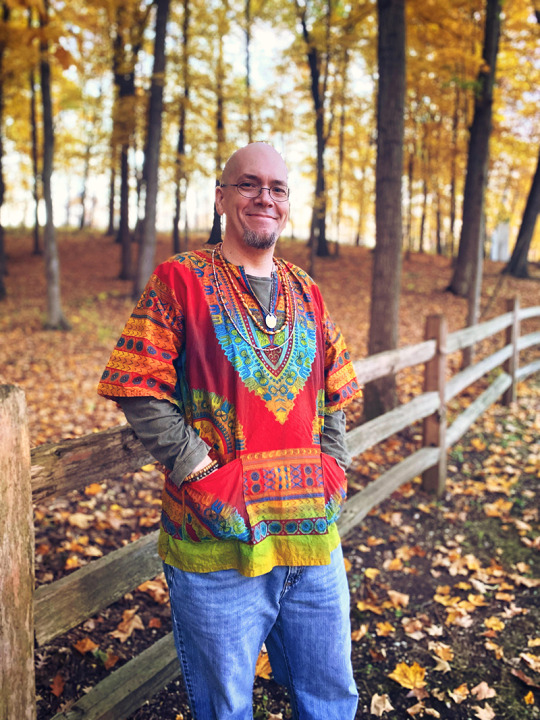
Interview with Nimbudala (November 2021)
1. What are some recent inspirations?
Playing percussion has really inspired me. And I have fallen in love with the ukulele. I spend more time these days playing drums and ukulele than I do on my synthesizers.
Lately, I’ve been listening to lots of Pink Floyd, Don Cherry, The Cosmic Jokers, Pharoah Sanders, John & Alice Coltrane, stuff from the Inner Islands and Flower Room labels, Psychedelic Source Records, Sun Ra, Jimi Hendrix. But Hendrix isn’t a recent inspiration. He was probably my first. I’ve been listening to him since I was 12. I always go back to his music. I remember when I first heard “Are You Experienced?” About halfway through “Manic Depression,” I knew I would never be the same.
Here are some albums I cannot live without right now:
“Future Days,” Can
“Big Fun,” Miles Davis
“Hawkwind,” Hawkwind
“Paêbirú,” Lula Côrtes e Zé Ramalho
“Heaven,” Arica
“A Meditation Mass,” Yatha Sidhra
“Astral Traveling,” Lonnie Liston Smith
“Lord Krishna Von Goloka,” Sergius Golowin
2. Will “Life On Bird Mountain” remain the final Inner Travels release? Or can you see continuing to work on Inner Travels material going forward in addition to Nimbudala?
If I make more quiet, inward-looking music, I suppose it could be under the Inner Travels name. I have no plans right now to make a new Inner Travels album. Then again, I try to avoid plans as much as possible when it comes to making music. I like surprises.
There is a finished album that bears the Inner Travels name. It’s a collaboration with Endurance, where he created these field recordings from another planet on his modular synth, then I played keyboards over them. We’re just looking for a label to release it.
3. You were working on “Universal Compassion” over the last few years — how did you feel that these pieces stood apart from your work as Inner Travels during that time?
It may not sound that much different to the listener who is familiar with Inner Travels. But to me, “Universal Compassion” has a broader spectrum than most of the Inner Travels stuff — except for “Yonder,” which I think is the direct predecessor to this album. “Yonder” had some cosmic sounds but also an earth spirit. There was a balance. “Universal Compassion” also has it, but with more depth and focus.
I felt like this album and what I do now as Nimbudala really evolved out of Inner Travels, much in the same way Inner Travels had evolved from Riot Meadows, my first recording project. I think in making “Universal Compassion” I gave myself different roles. I started to think of myself more as each different band member, the part they would play in the song, and I started to think more like a producer. I immersed myself in each role. Then I grew the songs, lived with them for a longer time than usual. I believe all that improved my focus.
Also, at the time I was making the album, I was reading books by Thich Nhat Hanh, whose work certainly influenced the album title. This music really helped me get into the idea of a universe where everyone showed compassion for each other.
4. I know you are working on new Nimbudala material. Has your creative process changed at all since you officially started working under the new moniker?
I think it has. I feel like I am learning to be my own band, if that makes any sense. But the Nimbudala sound has changed since “Universal Compassion,” plus I have some new gear. Anytime there’s new gear, the process changes.
5. What is your process for figuring out if a track is finished?
I listen to it a lot. Much of the time spent on “Universal Compassion” was listening to the songs. For this album, I spent a few years listening to about half the songs on it. But I don’t think it will take that long for the next one. Once I no longer feel the urge to change a track, I know it’s finished.
Then again, a song is never really finished, is it? I would like to re-record some of the “Universal Compassion” songs. But if I did that now, I would probably lose focus on my current projects. Maybe someday down the road I’ll re-record those songs.
6. When did you first play a synthesizer and what was that experience like? Did you know pretty quickly that it was something you wanted to get deeper into?
Ah, thanks for asking me this! It takes me back to when I was a kid. I grew up in the 80s, when synths were everywhere — on the radio, in music videos, in stores. As far back as I can remember, I always wanted a synthesizer.
The first time I ever played one, I’m sure it was in a department store or a mall somewhere. I can recall waiting to play them when there were no employees around. Most times, the people working in the stores wouldn’t let you play them very long. They probably didn’t want some 10- or 12-year-old gunking up the keys or whatever. Surely they knew I wouldn’t be buying one at that age.
But if I could get away with it, I would spend as much time as I could on them, tweaking sounds or just exploring how a piano keyboard works. Then my mom would come find me, her face red from running all over Sears or wherever, and she’d be like, “Do you know how long I’ve been looking for you?” I’d be like, “Well, if you bought me one of these, you wouldn’t have to go looking for me.” Of course, synthesizers were very expensive back then. I never got one until I was in high school, and what I got was a Yamaha Portasound PSS-380. Hardly the industry standard, but it’s a great starter piece. I still have it. I used it a lot on the first Inner Travels tapes.
7. Do you feel like self-expression is a part of your work? Or is the work more about serving a particular purpose or functionality?
I think it’s both. Music is a form of communication. We use it to convey ideas, elicit a response. It helps us feel and imagine things. When we communicate, we have a message that we deliver, each in our own special way. We also express ourselves through the act of communication. We can’t help but express ourselves. We don’t even have to think about it.
8. What excites you about releasing music into the world these days?
The prospect of giving someone a wonderful experience by doing the thing I love most. I hope to make an album or a piece of music that inspires the listener to do something great.
9. What is your primary mode of listening to music? How do you think that affects your experience of what you listen to?
Quite honestly, I probably listen to most music on my phone. With a phone, I can listen to music whenever I want. But I prefer listening to music on my stereo system. Listening to a stereo can be like warming your feet by the fire at the end of a long day. Even on an average setup, which is probably what mine is. I still buy CDs, tapes, vinyl — not as much vinyl as I did 10 years ago. I buy CDs the most.
Recently, I had a conversation with someone about the difference between streaming music and CD or vinyl. Listening to a song on CD or vinyl, or even tape sometimes, is like seeing the Mona Lisa up close and in person. Streaming is like looking at a Xerox image of the Mona Lisa. You have an idea of what it looks like, but not the tactile sensation. You lose the depth.
Recently, I got my first SHM CD — Pharoah Sanders’ “Live at the East.” I streamed it a lot before it arrived, and I enjoyed that because I could hear it anytime I want. But man, once it arrived and I pressed play on that CD, it was like the band was performing right in front of me. Cliche, I know, but it’s true. My listening experience was enhanced so greatly by that CD.
10. Words of wisdom you like to recall in times of need?
There was something a stranger told me a couple months ago. I was buying something at a store that cost $1.06. I had just a $1 bill and a $20 bill. The cashier couldn’t make change for the $20.
Some man I never met, who was almost out of the store — like he was out the door, but he heard us talking — he walked back inside, approached us and fished in his pocket for some change. He wanted to pay the 6 cents. I tried to talk him out of it, but he insisted.
“We got to take care of each other,” he said. I have heard and read this bit of true wisdom before but it is easy to forget, given the way things are today.
Nimbudala is the work of Steve Targo. He recently released Universal Compassion on Inner Islands on October 22nd on cassette and digital formats. The album is available from our Bandcamp page.
0 notes
Text
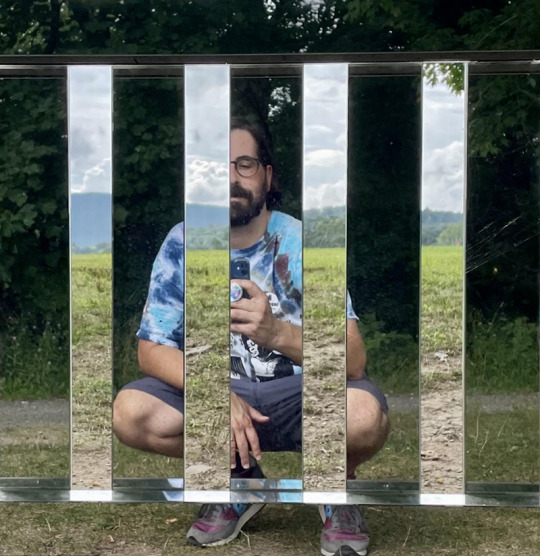
Interview with Golden Brown (November 2021)
1. What are some recent inspirations?
I have really loved the four seasonal recordings from Fuubutsushi over the last year. I find myself returning to them again and again and finding new things to appreciate in them with each listen. And it's been cool to see them evolve as a group and push things in different directions with each release, while still having a vibe that runs through all four.
Another recent standout for me is yes/and. Guitar based music that goes from being beautiful and melodic one minute to woozy and disorienting the next.
It's also been such a joy to get back to seeing live music since May or so. I feel like I've been really trying not to take it for granted after a year plus without. One of my favorite concerts I've seen this year was Bill Frisell and Tim O'Brien with their guitar teacher from when they were much younger, Dale Bruning. It was at Etown, an intimate venue in an old church in Boulder. Bill Frisell is one of my heroes and biggest influences and for this show he was playing a vintage guitar from Nick Forster's collection at Etown. It was amazing to hear him on just a beautiful, old acoustic guitar with no effects. It drove home what a true master he is of his instrument, sounding even more like himself than with all of the delay and loops.
2. How much of the material on “Gems and Minerals” is improvised and how much of it is composed?
On Gems and Minerals, the majority of it is composed to some degree, with the exception of the songs 'Gems,' 'Minerals,' and 'Fruiting Bodies.' When recording, I try to be open to serendipity or flow and just kind of let things happen as they may. Gems was originally a kind of extended, rambling intro to Turtle Spirit, but as I overlaid more sound on it I found that the tracks were coming together into something of their own. Minerals is a different version of the same 'song.' In that case, I ended up stacking two different takes of an electric guitar part and really liking the way they played off of each other. The dual lap steel parts on Finisterre came about the same way.
Fruiting Bodies was not so much improvised as composed on the spot. I was getting frustrated trying to record a different song, so I tuned my guitar to a different tuning I wasn't familiar with and started playing around. Once I had the little groove with the prepared guitar, the rest came really quickly. The 4 main voices (prepared guitar, electric guitar, keyboard, and mandola) were all recorded in an afternoon. Later on, Sara and I overdubbed the harmonized cello and lap steel.
3. In what ways do the influences of the landscape and nature where you live make their way into your music?
We are so lucky to live in a place where we can be in nature and away from people very easily. We live in Longmont, on a cul de sac, but can be on a trailhead in less than 10 minutes. And over the last year, hiking and being outside has been a balm and necessary for my mental health. We are also lucky to have a big backyard that backs up to a park, so it feels fairly open while still being in town. A Far Green Country was written sitting out there in the sunshine last winter.
Over the last few months, I've been making more field recordings of specific places and using those as a basis for a piece. A lot of the music I'm working on now features field recordings from one of my favorite spots here, a trail outside of Boulder called the Anne U. White trail. It's a really unique and magical landscape with a little creek and mossy rock walls on either side, it almost feels like the Pacific Northwest. The trail and some of the houses below the trailhead were wiped out in a massive flood here in 2013 and it only just reopened a year or two ago after a lot of rehabilitation. I go there a lot.
4. At what point in your life did you start recording music and what were those recordings like?
The first thing I remember recording was a song with my guitar teacher in high school, Steve Ellis. He is the person who taught me how to fingerpick, which opened up new worlds for me. But he also helped me record a song on a 4 track recorder, kind of giving me a taste for DIY home recording. I remember drumming on a metal trash can with chopsticks and thinking it was the greatest sound in the world.
The first recordings I made as Golden Brown were probably around 2005 or 2006. I borrowed a digital eight track from a friend and recorded an album called Whiskers. Some of those songs are still around - I recorded new versions of Whiskers and Green Road last year. Some of them are kind of goofy, just playing with sound, using found sounds, casio keyboard drumbeats, detuned guitars, etc.
5. How do you see your trajectory as Golden Brown from the “Skullcap” release to your present work?
There is a line that connects all of them, but I kind of struggle to articulate what that is. Skullcap felt like a step towards what I wanted to do musically, but I was still figuring out how to capture that sound. Listening back to it now, some of it kind of makes me cringe but some I still appreciate. I really didn't know anything about recording back then, so the sound is a little rough and ready. I still have a lot to learn in that realm. Lonesome was the first album of mine that I was really proud of and I still enjoy listening to it.
High Tide at Gold Beach was a different direction and my first foray into longer form pieces. I was listening to a lot of Ali Farka Toure and Boubacar Traore at the time and trying to incorporate some of that influence into my own songs. I had also added my Nord Electro and Line 6 delay modeler by that time, so was having a lot of fun playing with the possibilities there.
After High Tide at Gold Beach, I took an inadvertent hiatus from recording for a few years. Part of it was working too much and living in spaces that weren't as conducive to making music, but I think I also felt a little torn between different sides of my musical personality. I had been steeped in the kind of Americana, fingerpicked guitar style for a long time but the cosmic ambience of High Tide was a complete departure from that. It took me a while to see that they were complimentary, not contradictory and that they were both equally valid. Sara and I got married in 2015 and writing and recording two pieces for the wedding caused me to regain some inspiration in my own music. Those songs ended up being on last year's Flora and Fauna of the Uncanny Valley - 'Love Song' and 'New Ramble.'
6. Do you see yourself as part of any particular musical tradition or lineage?
Not really, when I first started making this music I was listening to a lot of John Fahey, Leo Kottke, and other fingerstyle guitarists. I still do, but my emphasis has shifted more to atmosphere and vibe than proficiency. I am not a technical guitarist and I find that I don't enjoy the music I make when I am trying too hard as much as when I just try and be open to inspiration's flow, if that makes sense. I really admire and enjoy the music of players like Gwenifer Raymond and Yasmin Williams, but I know I will never be able to play like them. So I try to keep my guitar playing fairly simple and create lots of atmosphere around it.
7. Where did the name Golden Brown come from and is there any connection to the song by The Stranglers? (We nearly got in trouble from our digital distributor over that particular overlap!)
I actually didn't know the Stranglers song when I first started recording as Golden Brown. I thought of it as a kind of fleeting state of grace in cooking or baking - the perfectly baked loaf of bread or perfectly toasted marshmallow. If it stays on the heat any longer, it crosses that threshold and is no longer golden brown. I also just liked the way it sounded. Later on, when I heard the Stranglers song and found out that golden brown can be a euphemism for heroin, I thought about changing it (I have friends and family in recovery and would never want to make light of addiction). In the end I decided to keep it and reclaim the term in its more innocent meaning.
8. You recently added the mandocello to your instrumental palette on this album. How do you feel that instrument affected your compositions?
This was a really fun instrument to add to my music. A couple of years ago, I got a little obsessed with the Carnatic electric mandolin master U. Srinivas. Absolutely towering player and so, so talented. Like almost doesn't belong on this planet type of musician. I think I wanted to play around in that harmonic range but have it be something that could fit in with the sound of my music, so after some research I found this electric mandola from Eastwood Guitars. Sara knew I was obsessing over it and got it for me last year as a birthday gift. One of the things I like about it is that it's a little disorienting coming from guitar. It's tuned in fifths, so the tonal/spatial relationships I know on guitar don't apply. It's helped me get out of some patterns and try to play more intuitively. On Gems and Minerals, I ended up using it on 'Fruiting Bodies,' 'Gems,' 'Ash Emerald,' and 'Palimpsest.'
9. What drives you to put music out into the world?
For me, it's the best or maybe only way to share this kind of internal life that we all have. All of the emotions and half formed thoughts and weird dreams that make up who a person is, that for me are difficult to articulate in words. I could never really write prose or poetry, although I love to read. I like to draw and collage but visual art doesn't come to me as naturally as music. And the brilliant part about any creative practice is that it nourishes itself and grows the more you do it.
As I mentioned above, I had a period for a few years where I felt disconnected from my own music and wasn't playing as much. Getting back into creativity's flow and being open to the inspirations I find there has been one of the great joys of the last few years.
10. Words of wisdom you like to recall in times of need?
I am a big re-reader. I read the Lord of the Rings trilogy about once a year and take a lot of comfort and joy from it. In the past five years or so, I kept returning to these lines:
'But in the end, it's only a passing thing, this shadow. Even darkness must pass. A new day will come. And when the sun shines, it'll shine out the clearer.'
The title of A Far Green Country also comes from Tolkein, from a beautiful dreamy passage near the end of the Return of the King: 'And the ship went out into the High Sea and passed on into the West, until at last on a night of rain Frodo smelled a sweet fragrance on the air and heard the sound of singing that came over the water. And then it seemed to him that as in his dream in the house of Bombadil, the grey rain-curtain turned all to silver glass and was rolled back, and he beheld white shores and beyond them a far green country under a swift sunrise.'
I also am a huge deadhead and am immersed in the poetry of Robert Hunter every day. There are so many incredible lyrics, but recently I find myself returning to 'Brokedown Palace,' 'Comes a Time,' and 'Stella Blue' again and again. The beauty of those lyrics along with the fragile, wilting quality of Garcia's voice when he would sing one of those ballads is a devastating combination. And the late Hunter/Garcia songs 'So Many Roads' and 'Days Between' are even more so, given that they were written and performed as Jerry was fading.
Golden Brown is the work of Stefan Beck. He recently released Gems and Minerals on Inner Islands on October 22nd on cassette and digital formats. The album is available from our Bandcamp page.
0 notes
Text
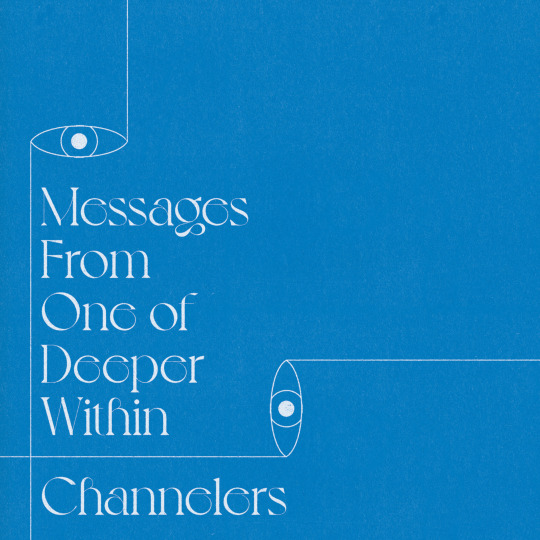
Channelers
"Messages From One Of Deeper Within"
Cassette / Digital
II081 (2021)
Bandcamp / Stream
0 notes